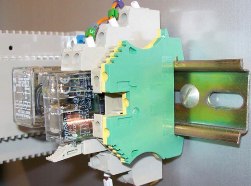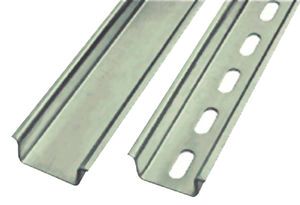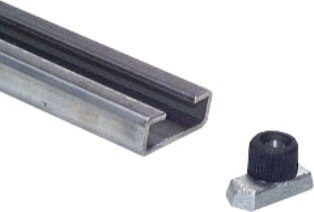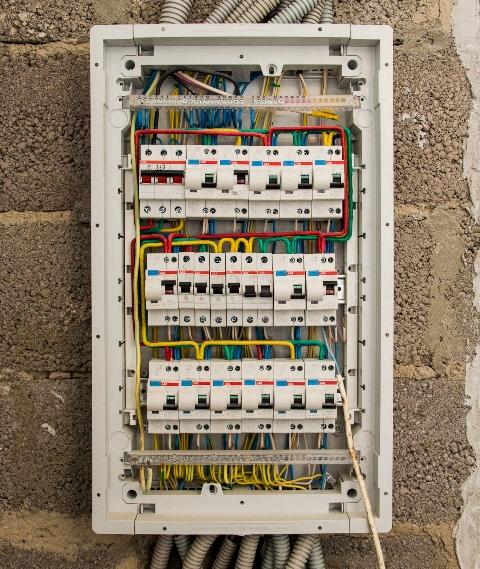Categories: Featured Articles » Novice electricians
Number of views: 11994
Comments on the article: 1
DIN rail for electrical installation: types, advantages of use
 It would seem that just recently, having opened any apartment shield, you could find there only a counter with a couple of traffic jams, but modern panels have already gone quite far from their Soviet predecessors. The same compact machines, in much larger quantities than steam, and other electrical equipment, are now mounted in panels exclusively on a DIN rail.
It would seem that just recently, having opened any apartment shield, you could find there only a counter with a couple of traffic jams, but modern panels have already gone quite far from their Soviet predecessors. The same compact machines, in much larger quantities than steam, and other electrical equipment, are now mounted in panels exclusively on a DIN rail.
Many modular elements, such as starters, relays, controllers, switches, timers, RCDs and more, can be assembled into blocks today by mounting them on a DIN rail - a brilliant invention of the German Institute for Standardization. This is a simple-looking perforated or solid profile made of steel or aluminum, characterized by the current of the ground terminal, strength and weight.
DIN rails are available in different lengths, they can be divided into shorter pieces as needed, for this a marking in the form of a notch can be applied to a long rail.

DIN rails differ in profile shape, so they are marked - Ω, G and C type. For mounting modular elements on the rail, its profile has specially lips, so that elements such as relays controllers, starters and RCDs, securely fix on it. Thus, the presence of DIN-rails in a modern panel greatly simplifies the installation process of various unified modular devices.
Many modern automation elements, power supplies and other electrical devices are adapted for mounting on a DIN rail. For example, the same machines simply snap onto the rail and no screws are needed. Counters, sockets, terminals, are also easily mounted on a DIN rail.

DIN rails can be found not only in shields. They can be used anywhere, anywhere, where you need to mount properly standardized equipment. For this, the rail has holes for fastening with screws or bolts to wherever you need. Before mounting the rail, it is enough to take into account the width of the installed modules, then cut off the desired piece of the rail with a hacksaw for metal or a grinder.
DIN rails are widely used in switchboards because of the ease of maintenance of switchboards equipped in this way. It is enough to slide the clamp of the device, and it is removed from the rail in a second.

It was noted above that DIN rails can have a different profile, which is indicated by the corresponding letter. So, the most common type of staff is Omega type rail (Ω –type)whose edges are curved outward.
In 2004, in Russia, as a national standard (GOST R IEC 60715-2003) was adopted rail TN35, An Omega-type DIN rail having a width of 35 mm, which is usually available in standard pieces of 2 meters in length. There is also a reduced version of such a rail, used for fastening terminals, the width and thickness of the profile is less.

At G-type DIN rails the edges are bent inward, while one of the edges of the rail is already different, and the profile of the rail is similar to the Latin letter G. G-type DIN rails are used for installation on them terminal blockhardware clamps etc. The width of the G-type rail is 32 mm, the length of the long side is 15 mm, and the short side is 9 mm.

The edges C-type DIN rails bent inward, so the profile of such a rail is similar to the Latin letter C. This type of rail is usually used to install terminal blocks, hardware clamps, etc. The width of the rail is 32 mm, the height is 15 mm.
About how to properly install modular electrical devices on DINRead here: Mounting electrical equipment on a DIN rail

See also at bgv.electricianexp.com
:
